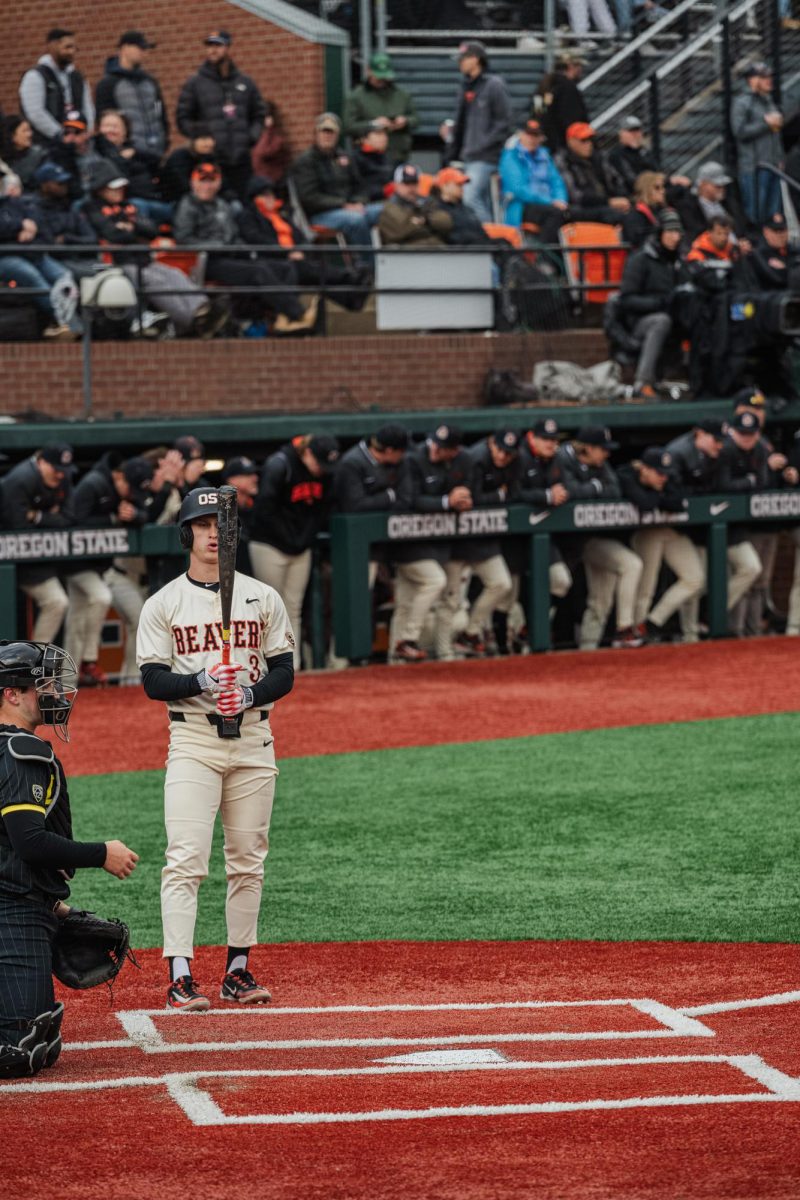While the books may have been bought, the dorm moved into and classes ready to begin, there may be one thing that students have yet to figure out: How to access health care while away from home.
Whether it be where to go for care or how to pay for the care you’ve received, we’ve laid it all out to make this complex topic simpler.
In June, Oregon State University’s Student Health Services and Samaritan Health Services joined together in what is now known as the Health Center located next to Reser Stadium at 850 SW 26th St.
The two major healthcare providers in town still function separately though, despite the unified location.
“Advocating for health care on your own can feel daunting at first, but you are not alone. We are here to help you find the wellness resources you need,” said Helen Lee, Robin Prosoki and Aubrey Gerst, representatives from OSU’s Student Health Services.
Where to find care and specific services
At Student Health Services students can get care for the following at the primary Health Center:
- Primary care
- Allergy and asthma
- Diabetes assistance
- Gender-affirming care
- Immunizations
- Mental health resources
- Oregon Contraceptive Care (CCARE program), PrEP for HIV prevention and PEP for post-exposure HIV treatment
- Reproductive and sexual health services
- Sports medicine
- Tobacco cessation
- Travel medicine
- Wellness and prevention knowledge and awareness programming
Students can also find sexual assault survivor-centered support at the Center for Advocacy Prevention and Education in the Student Experience Center Suite 350.
Student health services also operates a rapid care clinic located within Tebeau Hall for minor illnesses or injuries during the academic year.
All services require an appointment that can be made via phone call, through a student’s patient portal or in-person.
The patient portal is also home to messaging, test results, uploading an insurance card and signing medical clearances which must be done each year to consent to care.
For students seeking care outside of Student Health Services’ hours, Samaritan Health Services primary care and SamCare Express are located on the second floor of the Health Center and act as an alternative.
Samaritan Health Services also operates the newly returned pharmacy within the parking lot of the Health Center at the Samaritan Athletic Medicine building.
According to Student Health Services representatives, students can choose to have their prescriptions filled there or at any pharmacy of their choosing.
“So we’re really pleased to be able to bring… that service back to campus,” said Kelley Kaiser, senior vice president and chief administrative officer for Samaritan Health Services.
The Samaritan Athletic Medicine pharmacy, however, works off Samaritan’s insurance network coverage and is not covered by the Student Health Fee.
Insurance and paying for care
While knowing where to find care is important, a less immediate need underlies, and that’s how to pay for the services you received.
The Student Health Services representatives emphasized the importance of students contacting their insurers prior to coming to campus to better understand what is covered under an individual’s plan.
Although coverage will vary from student to student, there are some hard and fast rules to know about paying for care as a student.
At the beginning of each term, students taking more than one credit are charged with a health fee attached to tuition. This fee covers most medical office visits, nutrition or substance use counseling, Counseling and Psychological Services appointments and access to a 24 hour nurse advice line.
Ecampus students are able to opt-in to paying the student health fee but will not be automatically charged for it.
The fee does not however, cover the following;
- Lab and imaging tests
- Immunizations or allergy shots
- Travel appointments
- Wound care, stitches, wart removal etc.
- Physicals required for certain departments (such as ROTC)
- Gynecological wellness or contraceptive management visits (although students may sign up for Oregon Contraceptive Care program or CCare)
- Medical supply such as crutches, braces, splints etc.
- Motor vehicle accidents
- OSU student workers comp
For these services Student Health Services representatives said, a student’s insurance is billed, with any remaining charges not paid by insurance being added to the student account.
“If you are concerned about lab or other costs, you can see our clinician for a free visit and have the clinician send the lab order to an in-network location covered by your insurance, for example,” said the Student Health Services responding team.
The SHS representatives encourage students to reach out to their plans to find coverage specifics.
Student Health Services’ tax ID number is 61-1730890 which the representatives say is the best way for insurers to look them up.
Despite Student Health Services and Samaritan Health Services’ new shared location, the payment process is not the same, therefore requiring a new set of insurers and processes for students to be aware of when receiving care through Samaritan Health Services.
According to Kaiser, there are a number of insurers that Samaritan will accept through what is called “wraparound networks”.
“So let’s say you are a family that lives in New York, and you have some insurance company from New York. And then you as the student go to school in Oregon, that insurance company usually has kind of a second tier where it’s a wraparound network,” Kaiser said.
Kaiser also noted that the Student Health Insurance plan offered for purchase by OSU is included within one of these wrap-around networks as the plan is administered by PacificSource.
Major insurer – Kaiser Permanente – however, is considered out of network. This means that students with a Kaiser insurance plan receiving care at a Samaritan clinic (such as SamCare Express located next to the Health Center) would likely pay out of pocket costs.
Kaiser said she encourages students to reach out to Kaiser Permanente about their specific plan for specifics.
According to Kaiser, regardless of an individual’s insurance coverage, or lack of insurance, Samaritan Health Services, as a non-profit, will still see anyone who seeks care.
“We would work with you on understanding what’s available and connect you with our financial assistance people to come up with what options might work with you to make sure you can (pay),” Kaiser said. “You would still be seen.”















































































































